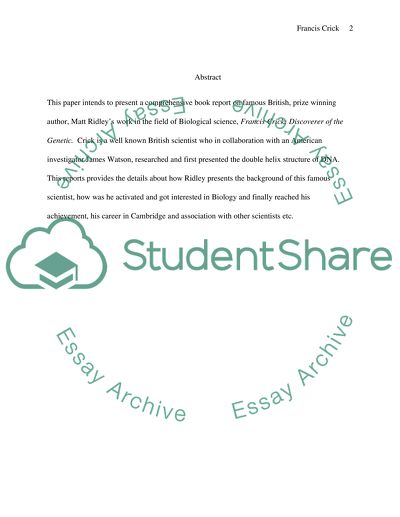Cite this document
(“Book report(Francis Crick Discoverer of the Genetic Code) Essay”, n.d.)
Retrieved from https://studentshare.org/miscellaneous/1518640-book-reportfrancis-crick-discoverer-of-the-genetic-code
Retrieved from https://studentshare.org/miscellaneous/1518640-book-reportfrancis-crick-discoverer-of-the-genetic-code
(Book report(Francis Crick Discoverer of the Genetic Code) Essay)
https://studentshare.org/miscellaneous/1518640-book-reportfrancis-crick-discoverer-of-the-genetic-code.
https://studentshare.org/miscellaneous/1518640-book-reportfrancis-crick-discoverer-of-the-genetic-code.
“Book report(Francis Crick Discoverer of the Genetic Code) Essay”, n.d. https://studentshare.org/miscellaneous/1518640-book-reportfrancis-crick-discoverer-of-the-genetic-code.


